This document summarizes Valentina Presutti's presentation on using frames for knowledge extraction and linked data. It discusses how frames can be used as units of meaning to reconcile knowledge from different sources. It provides background on frames and examples of how they can represent situations and relationships described in text. The document then outlines several projects from STLab that use a frame-based approach for tasks like knowledge extraction, relation extraction, and sentiment analysis. It discusses tools like FRED and Framester that perform frame-based knowledge extraction and integrate linguistic and factual knowledge through linked data.
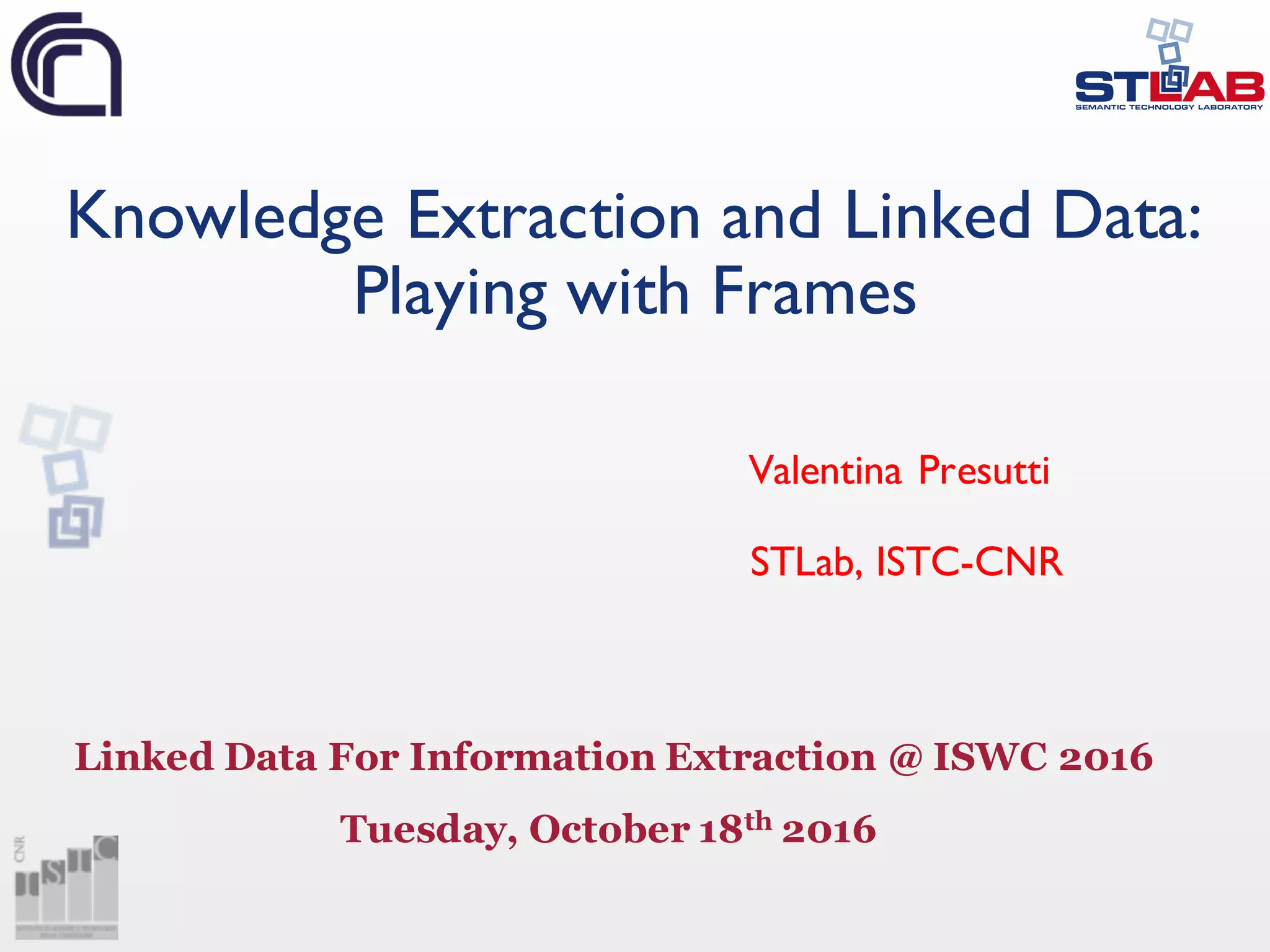
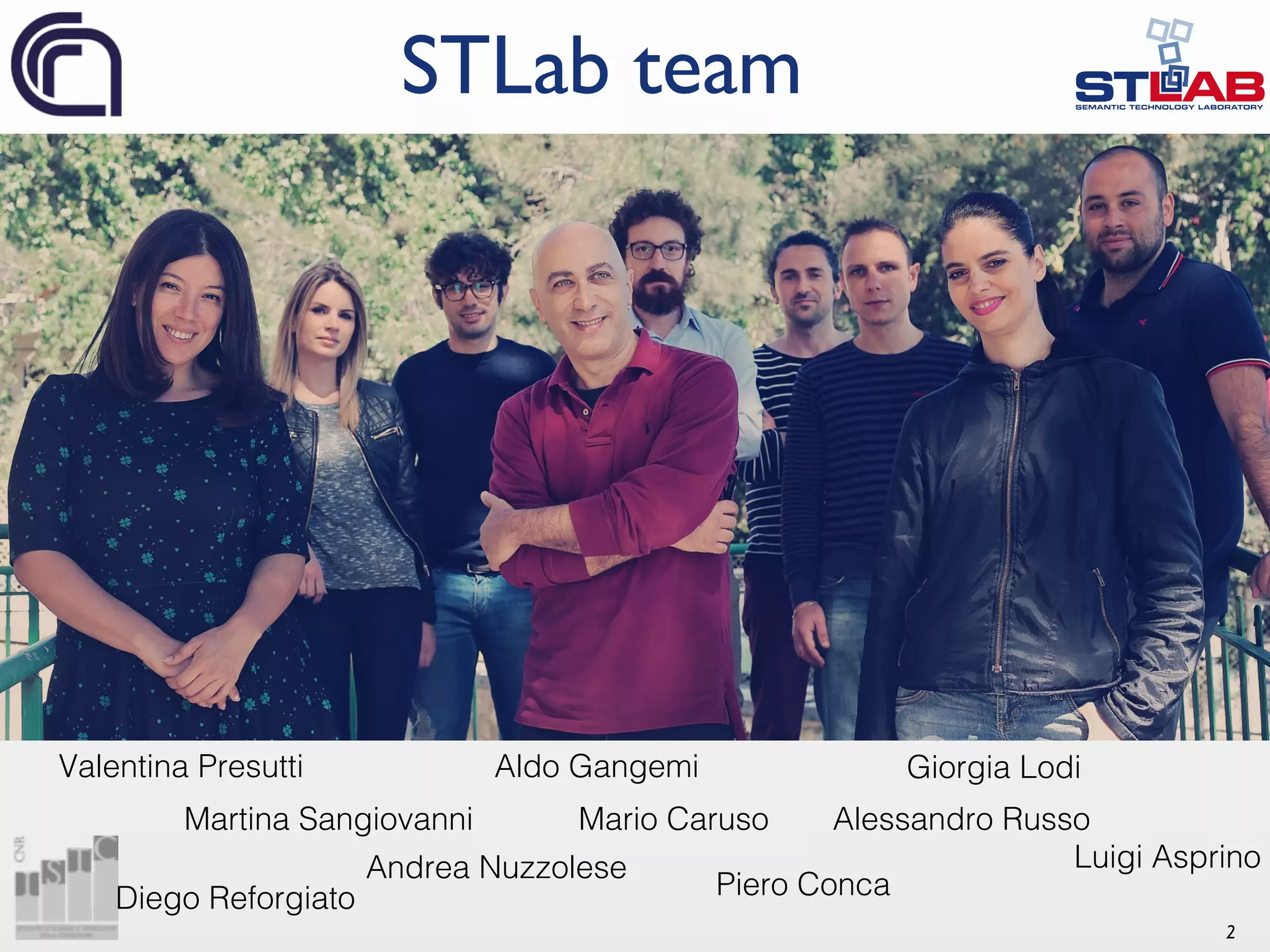
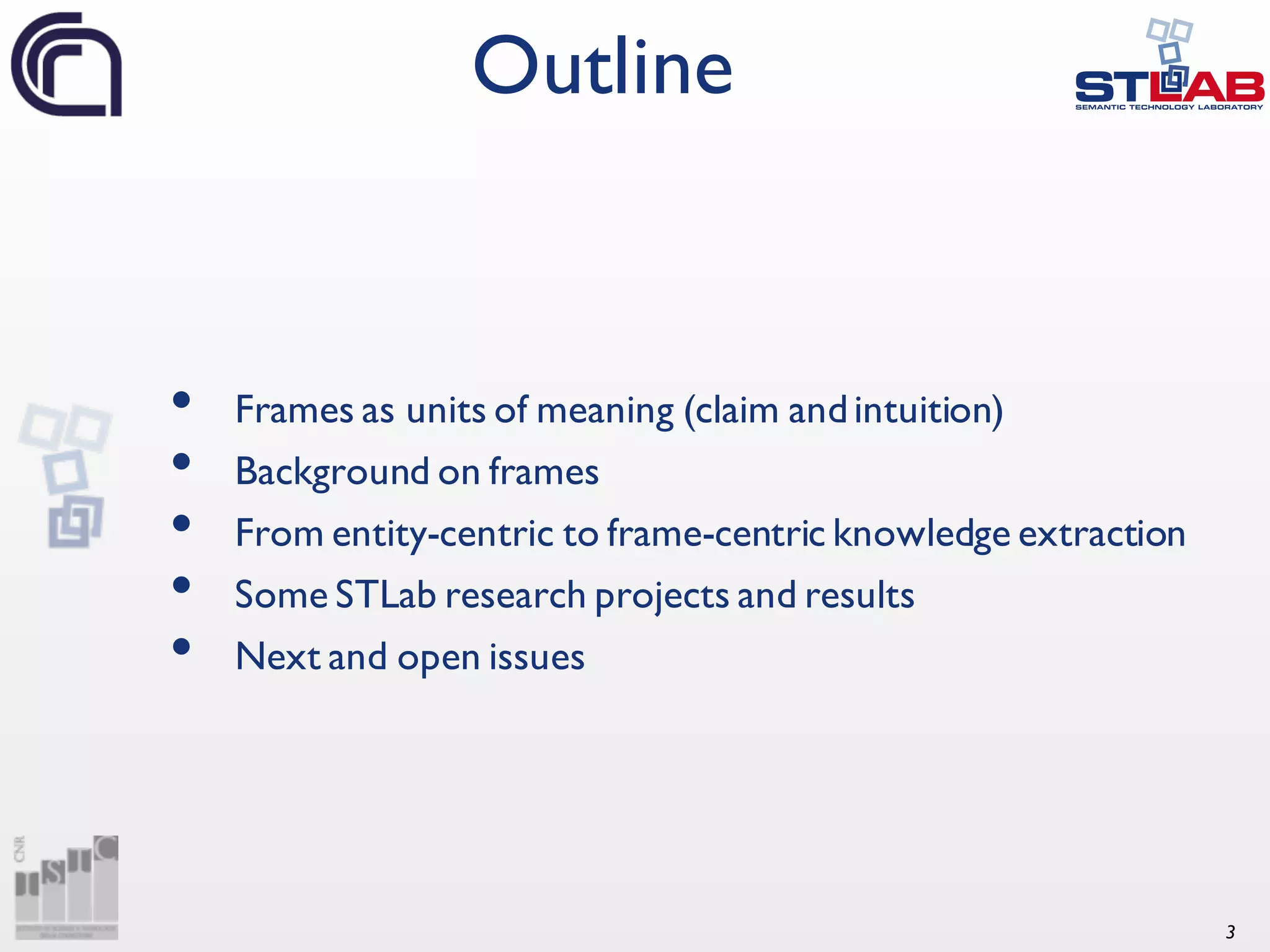
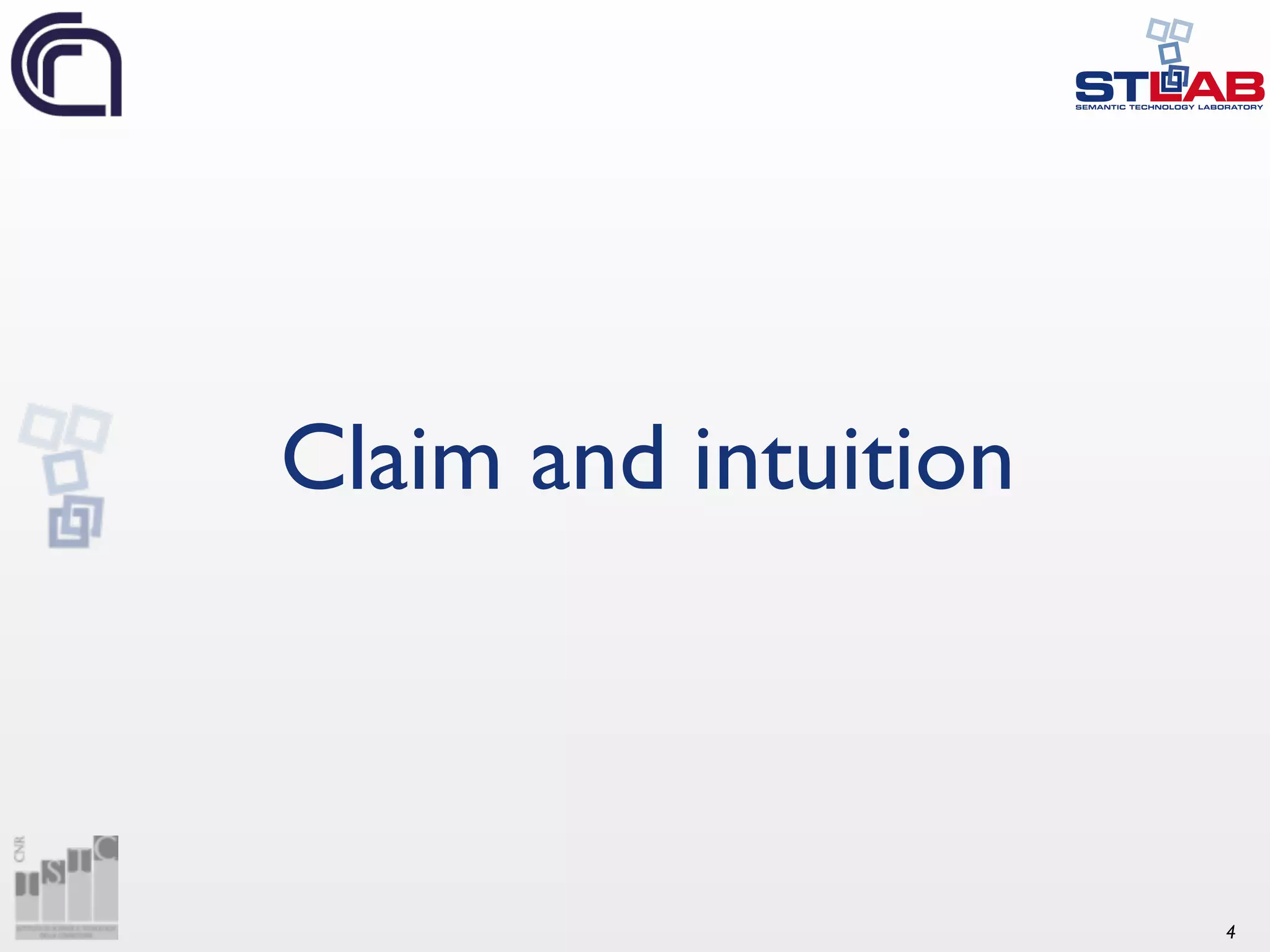

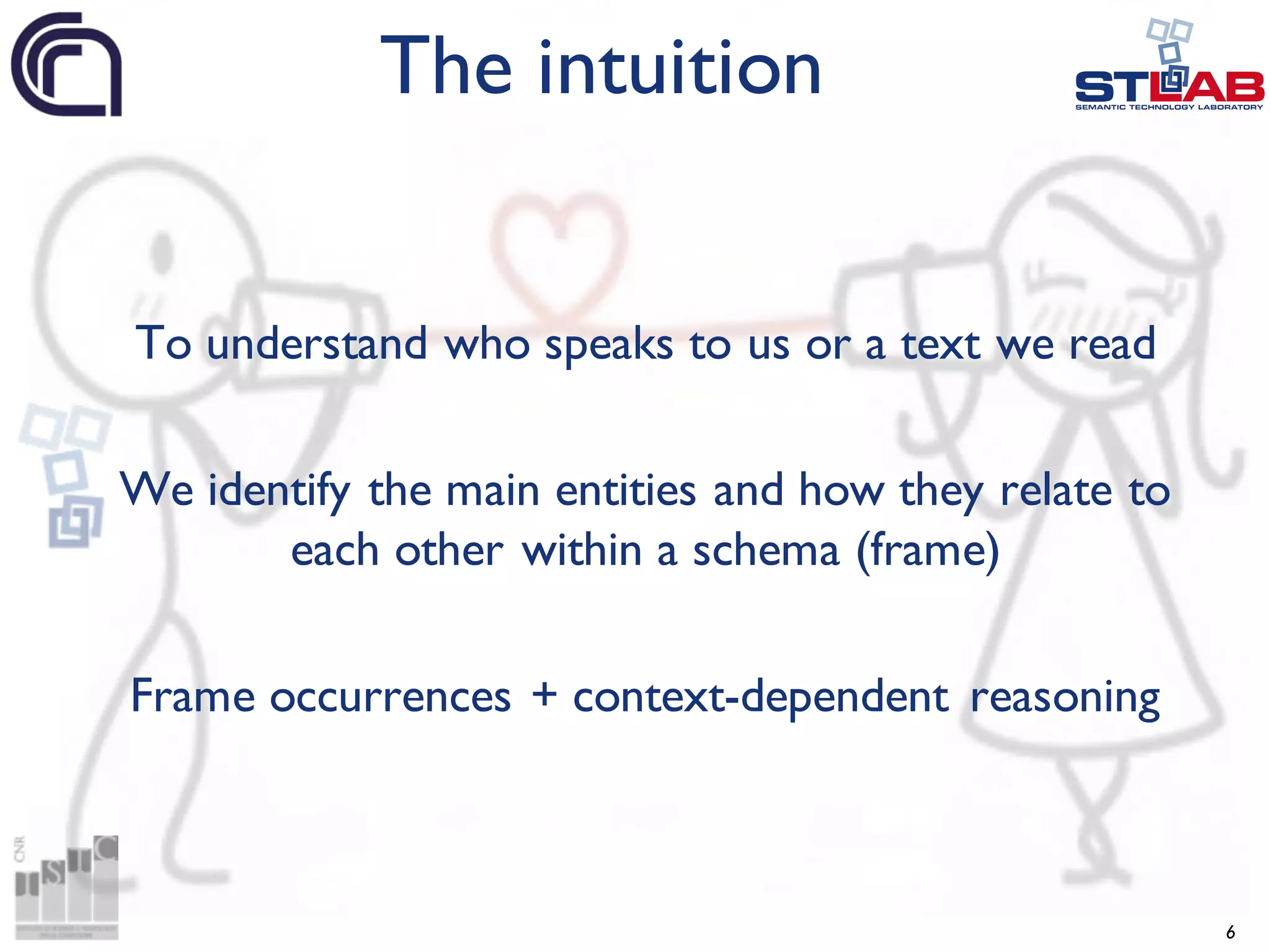

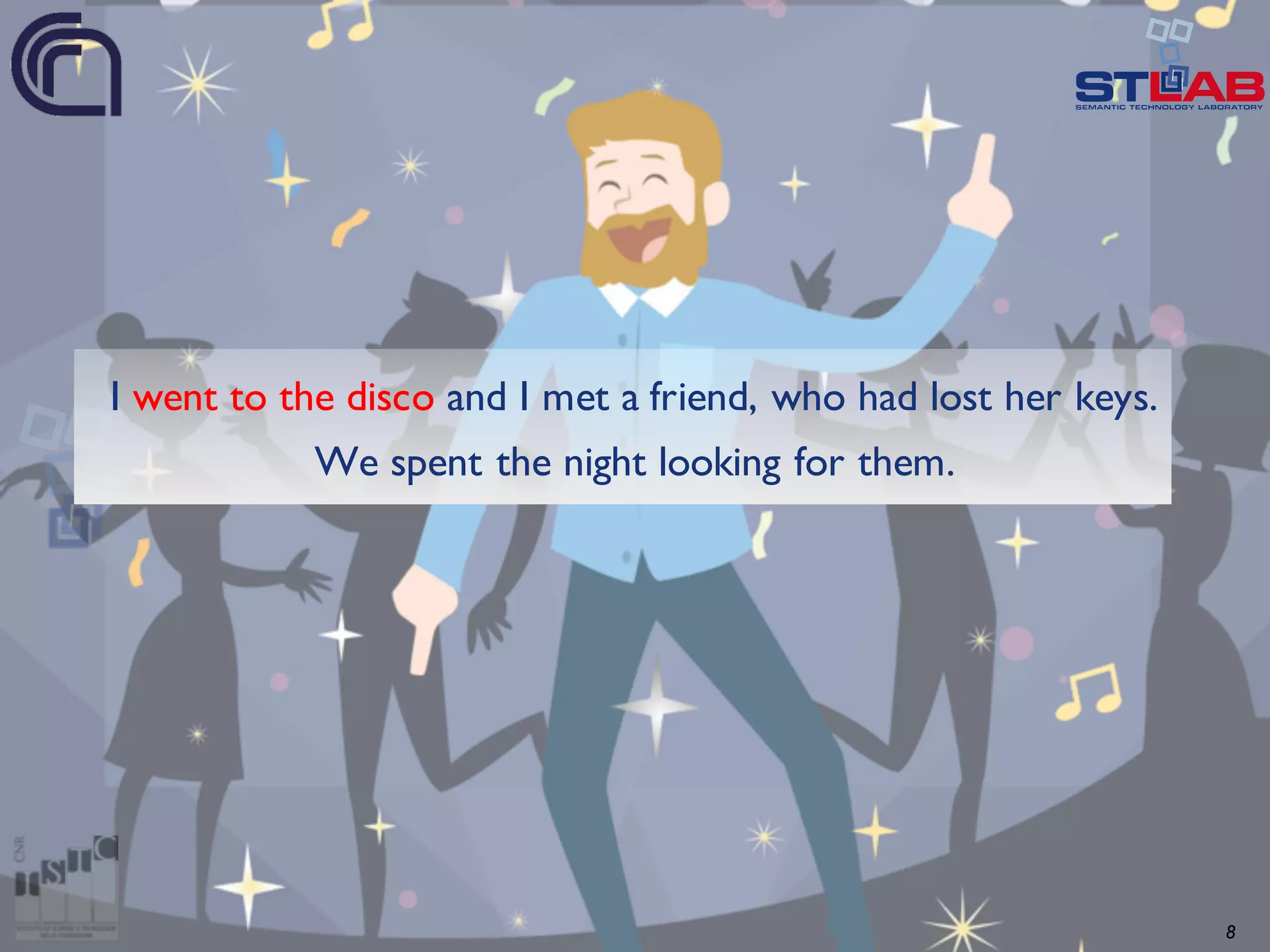

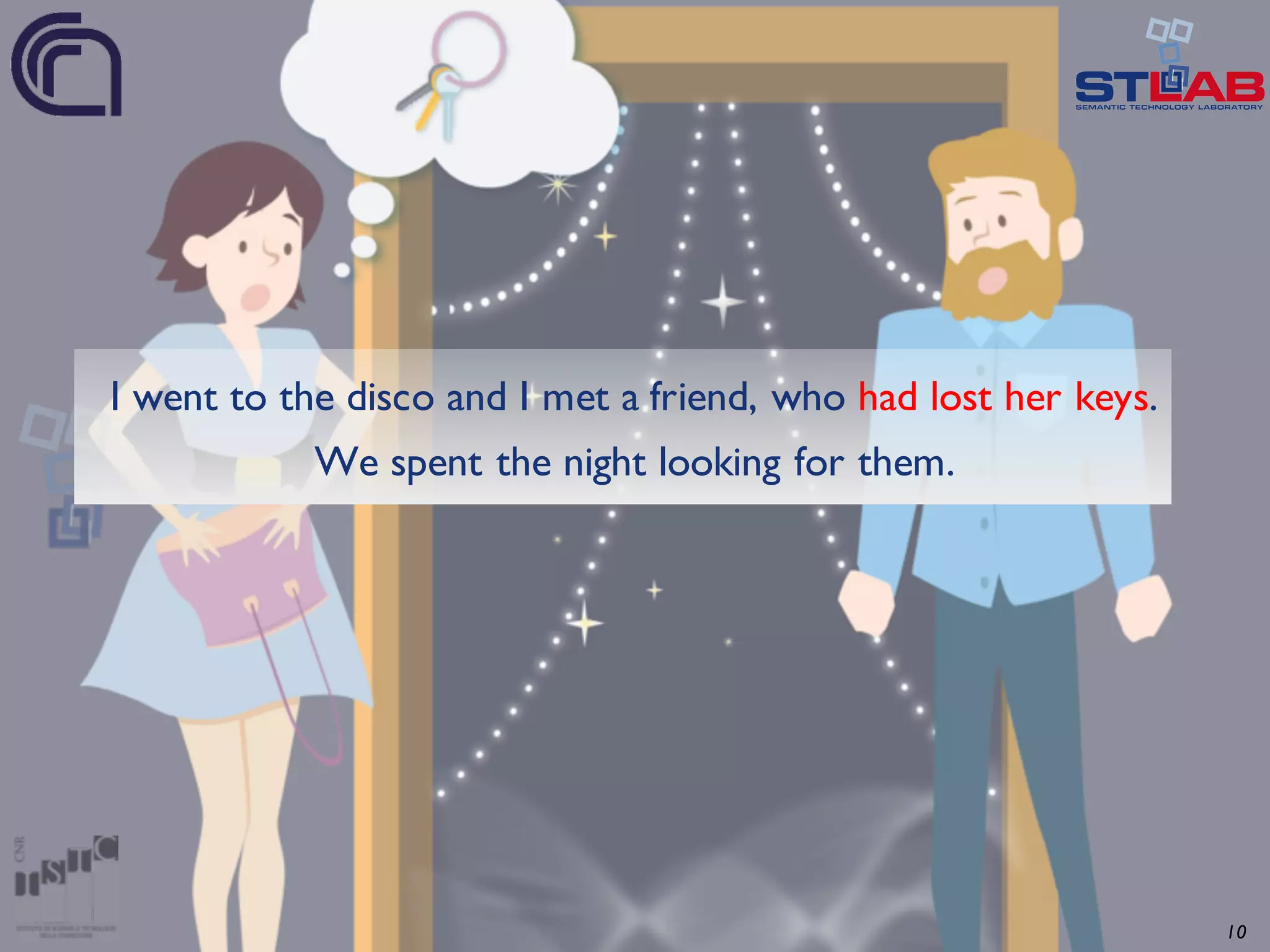



![14 Minsky [1] “When one encounters a new situation […] one selects from memory a structure called a Frame. This is a remembered framework to be adapted to fit reality by changing details as necessary.” “A frame is a data-structure for representing a stereotyped situation, like being in a certain kind of living room, or going to a child's birthday party” “We can think of a frame as a network of nodes and relations.” “Collections of related frames are linked together into frame-systems” Fillmore [2] “[…] in characterising a language system we must add to the description of grammar and lexicon a description of the cognitive and interactional “frames” […]” “The evolution toward language must have consisted in part in the gradual acquisition of a reportory of frames and of mental processes for operating with them, and eventually the capacity to create new frames and to transmit them.” “[…] in order to perceive something or to attain a concept, what is […] necessary is to have in memory a repertoire of prototypes. The act of perception or conception being that of recognizing in what ways an object can be seens as an instance of one or another of these prototypes.”](https://image.slidesharecdn.com/ld4ieiswc2016-161018000125/75/Knowledge-Extraction-and-Linked-Data-Playing-with-Frames-14-2048.jpg)


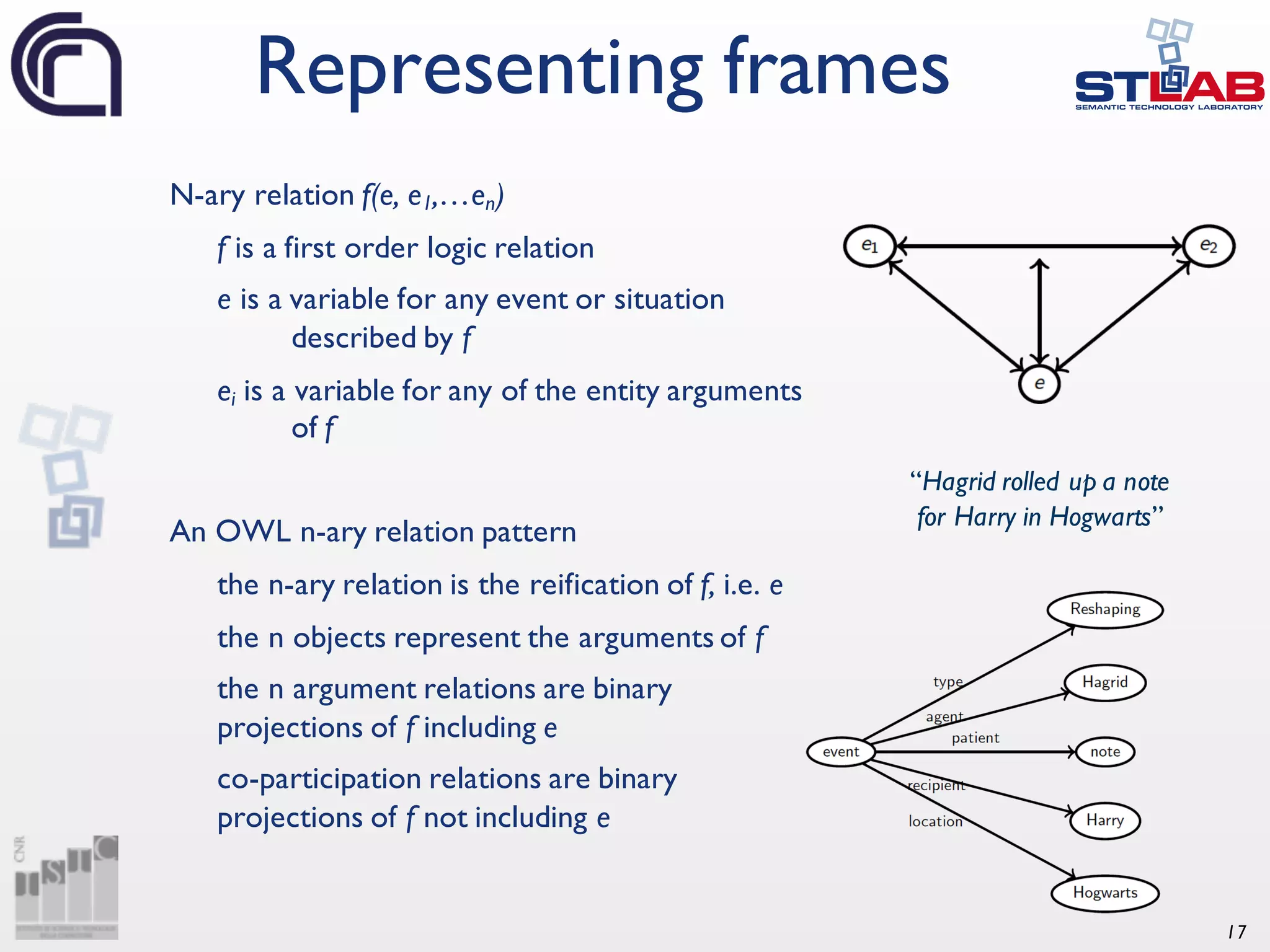
![18 From entity-centric to frame-centric design and extraction Before: Key terms à classes/properties After: Key situationsà frames/patterns Frames as units of meaning [3]](https://image.slidesharecdn.com/ld4ieiswc2016-161018000125/75/Knowledge-Extraction-and-Linked-Data-Playing-with-Frames-18-2048.jpg)
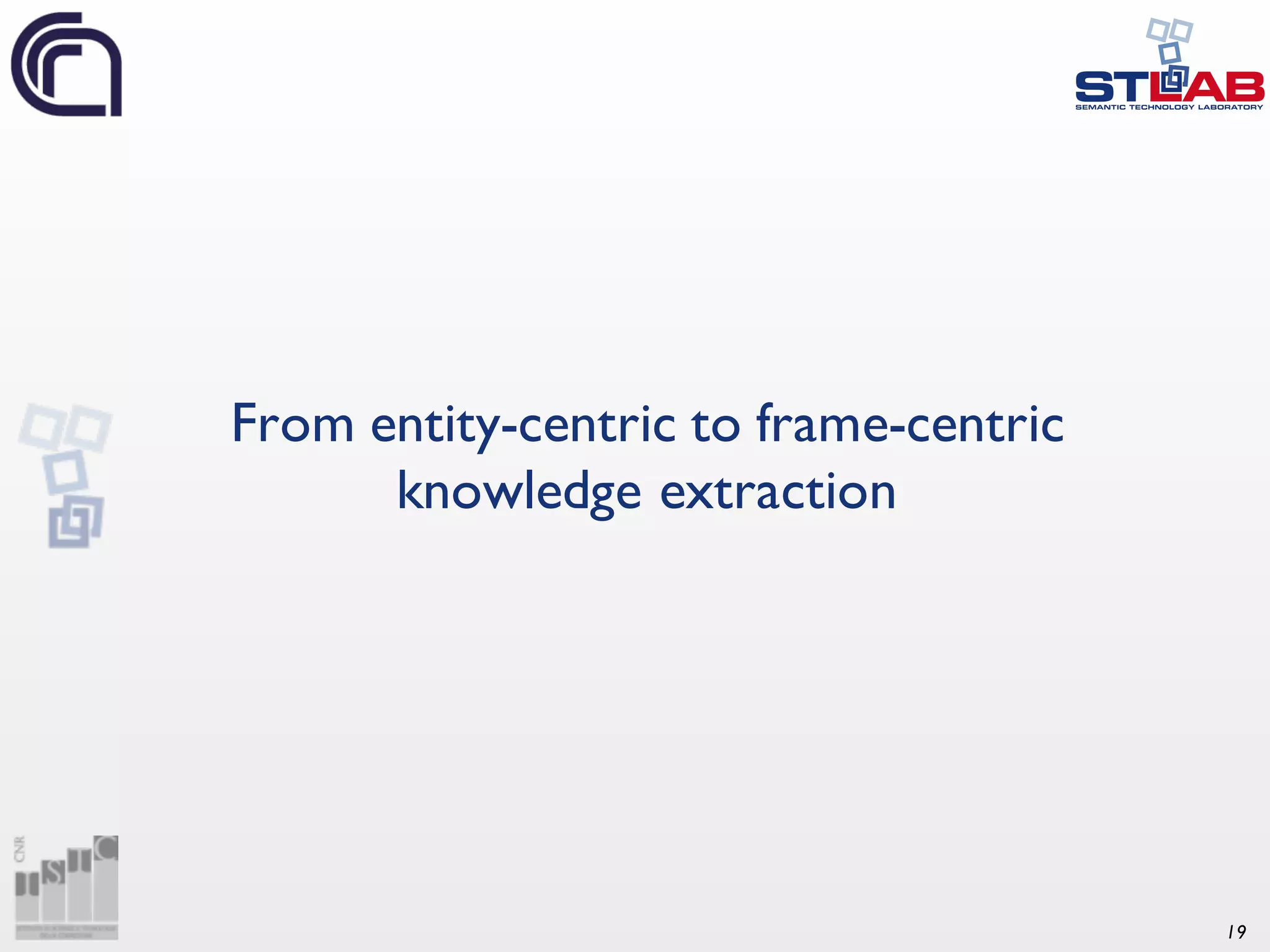
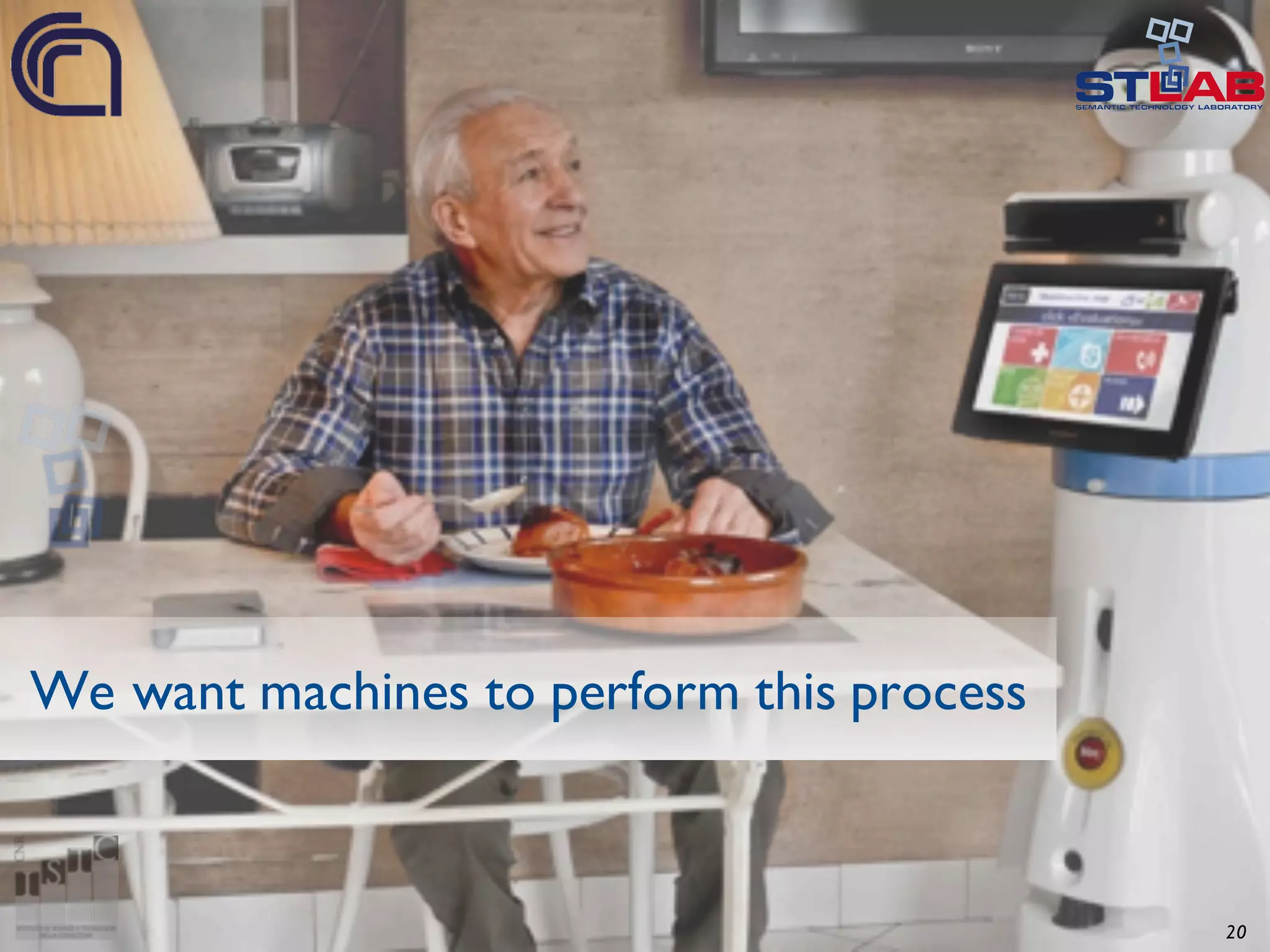

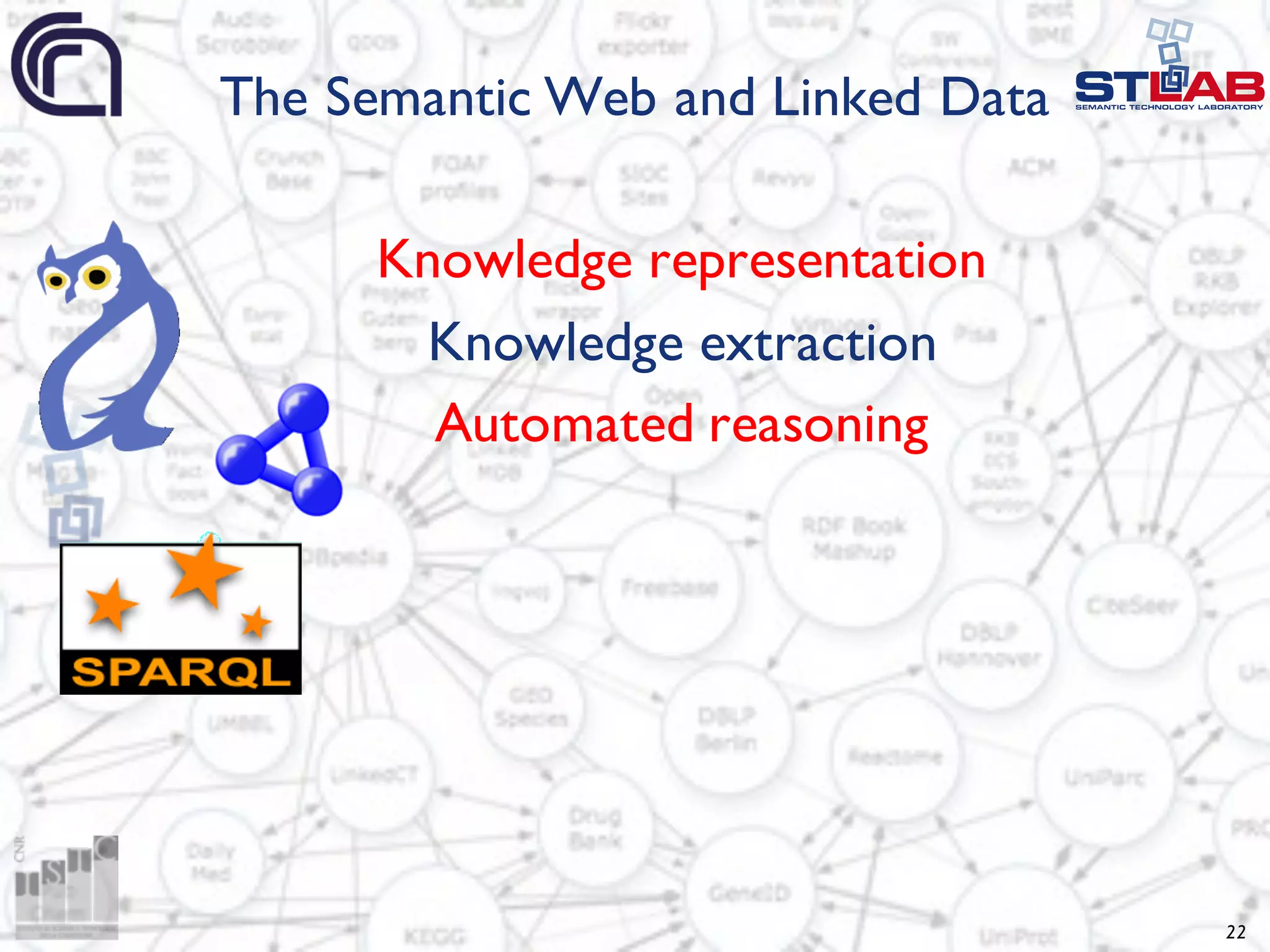
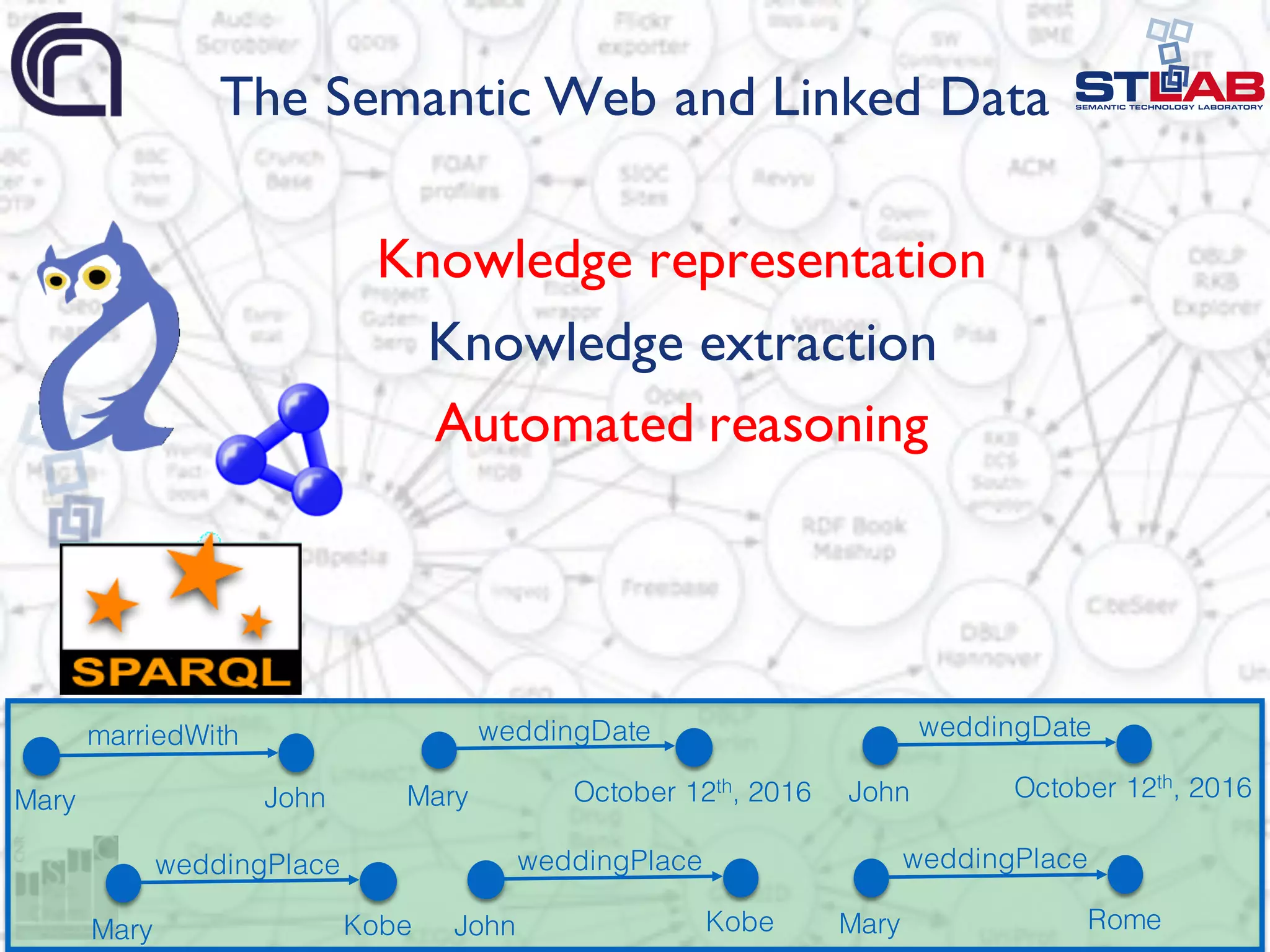
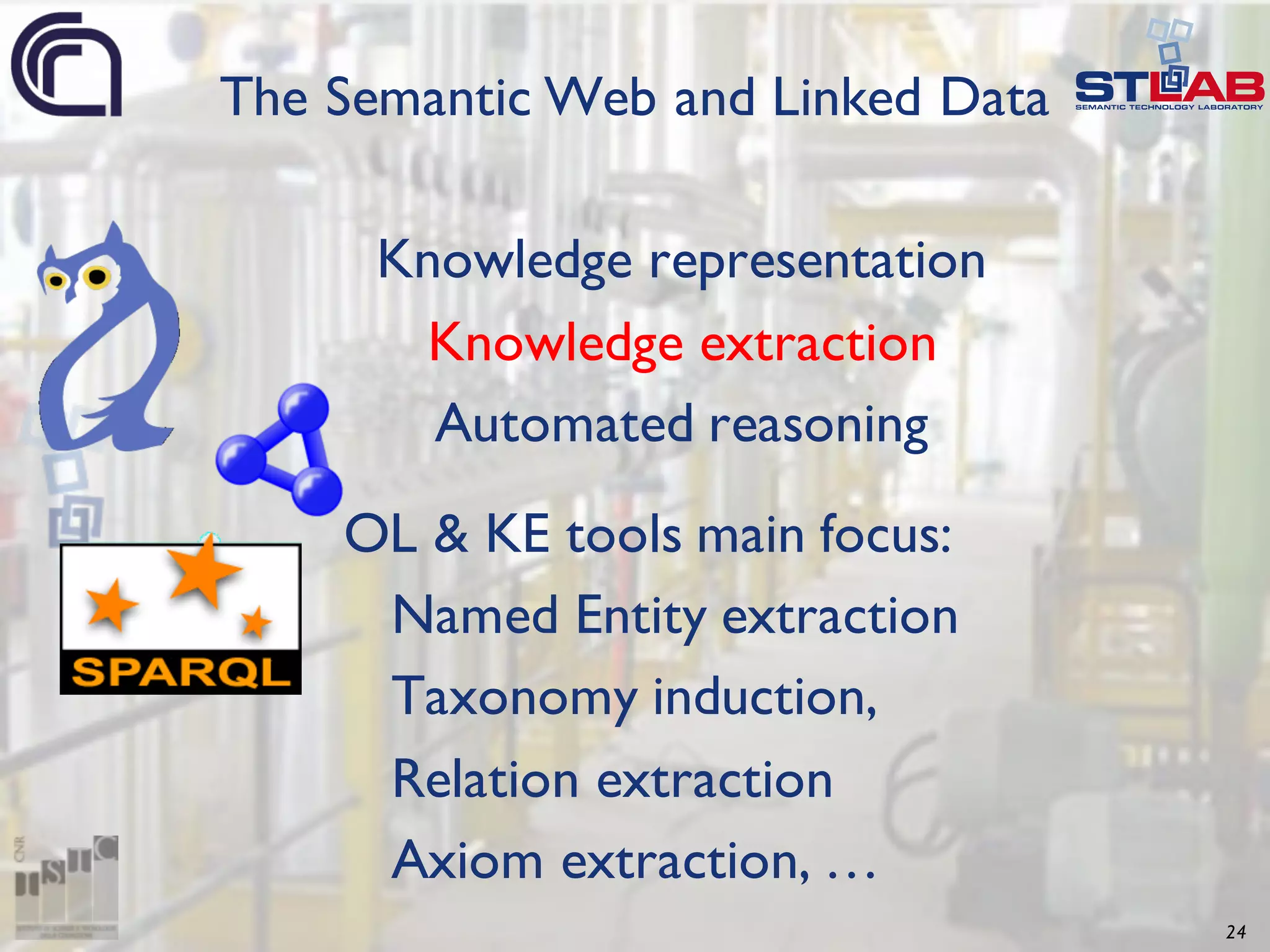
![25 This is useful, but it’s not enough Semantic heterogeneity Lack of knowledge boundaries (context) [3] marriedWith firstMarriageWith spousemarriage spousedate](https://image.slidesharecdn.com/ld4ieiswc2016-161018000125/75/Knowledge-Extraction-and-Linked-Data-Playing-with-Frames-25-2048.jpg)
![26 The role of frames in knowledge representation, extraction and interaction Performingempirical observations on the web (in line with van Harmelen’s [4]) Using frames for driving the design of solutions to research problems andtest their performance Frames as units of meaning](https://image.slidesharecdn.com/ld4ieiswc2016-161018000125/75/Knowledge-Extraction-and-Linked-Data-Playing-with-Frames-26-2048.jpg)

![28 Frame-based knowledge extraction [5] http://wit.istc.cnr.it/stlab-tools/fred/ From text to linked data](https://image.slidesharecdn.com/ld4ieiswc2016-161018000125/75/Knowledge-Extraction-and-Linked-Data-Playing-with-Frames-28-2048.jpg)


![31 Automatic selection of relevant binary projections of frames Usable label generation Formal alignmentbetween frames and binary properties Binary relations [6]](https://image.slidesharecdn.com/ld4ieiswc2016-161018000125/75/Knowledge-Extraction-and-Linked-Data-Playing-with-Frames-31-2048.jpg)
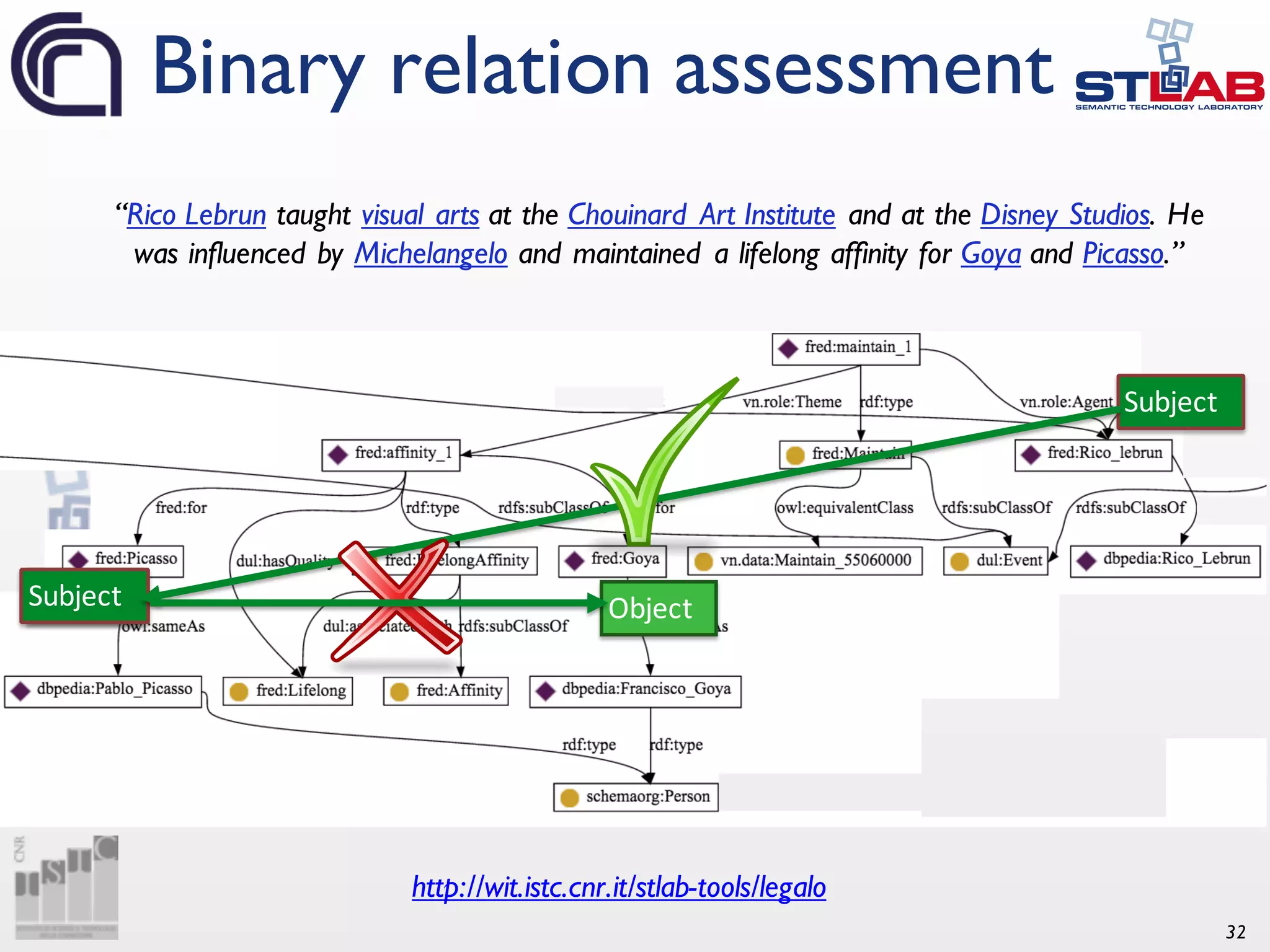

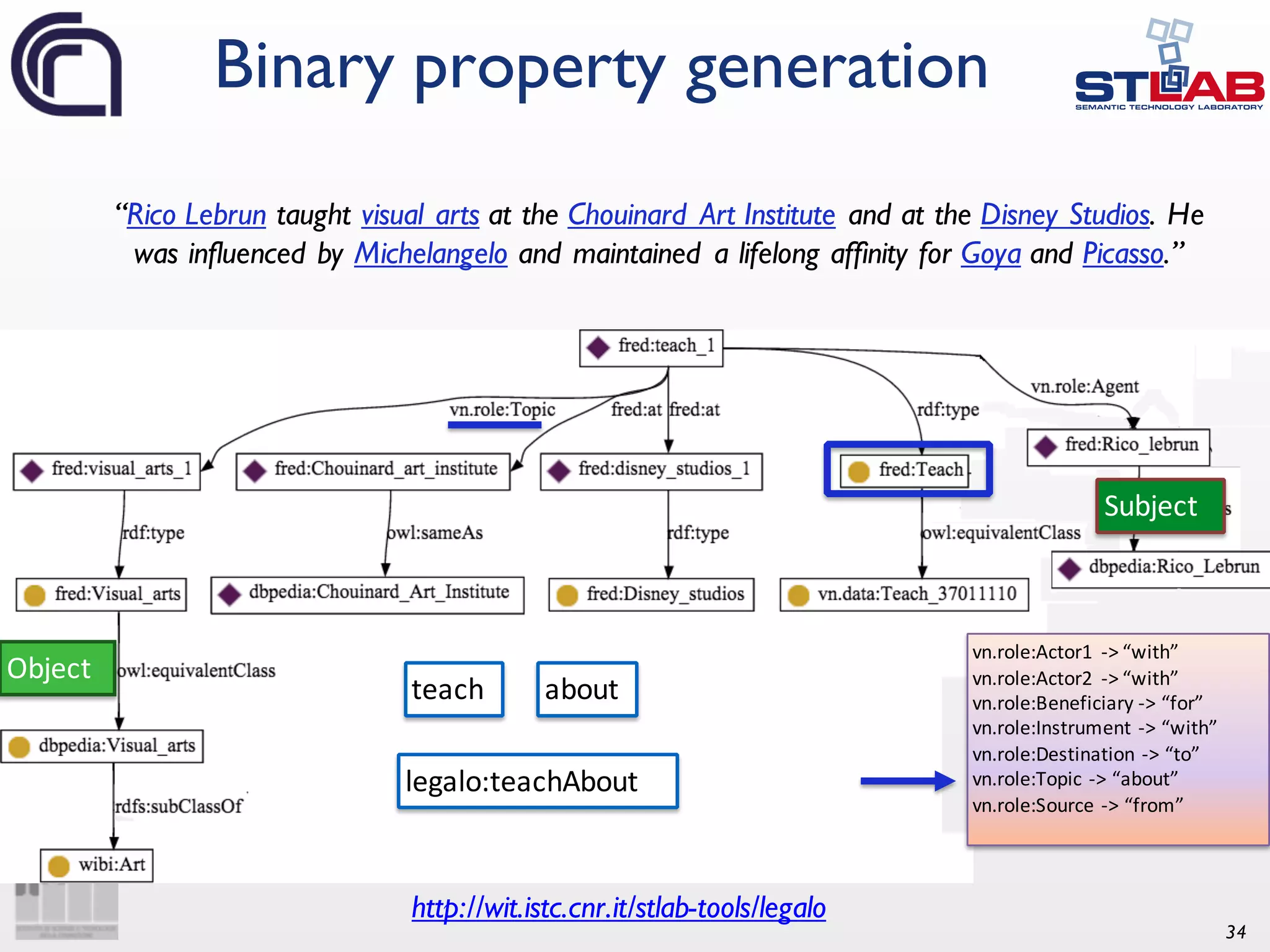
![35 Semantic Web triples and properties generation “Rico Lebrun taught visual arts at the Chouinard Art Institute and at the Disney Studios. He was influenced by Michelangelo and maintained a lifelong affinity for Goya and Picasso.” dbpedia:Rico_Lebrun s:teachAbout dbpedia:Visual_arts . s:teachAbout a owl:ObjectProperty ; rdfs:subPropertyOf fred:Teach; rdfs:domain wibi:Artist ; rdfs:range wibi:Art ; grounding:definedFromFormalRepresentation fred-graph:a6705cedbf9b53d10bbcdedaa3be9791da0a9e94 ; grounding:derivedFromLinguisticEvidence s:linguisticEvidence ; owl:propertyChainAxiom([ owl:inverseOf s:AgentTeach ] s:TopicTeach) . _:b2 a alignment:Cell ; alignment:entity1 s:teachAbout ; alignment:entity2 <http://purl.org/vocab/aiiso/schema#teaches> ; alignment:measure "0.846"^xsd:float ; alignment:relation "equivalence" . domain, range, subsumption linguistic and formal scope alignment to existing LOD vocabularies](https://image.slidesharecdn.com/ld4ieiswc2016-161018000125/75/Knowledge-Extraction-and-Linked-Data-Playing-with-Frames-35-2048.jpg)
![36 Evaluation tasks [7] 3 6 Tool/Task Topics NER NE-RS TE TE-RS Senses Taxo Rel Roles Events Frames +SRL AIDA – + + – – + – – – – – Alchemy + + – + – + – + – – – Apache Stanbol – + + – – + – – – – – CiceroLite – + + + + + – + + + + DB Spotlight – + + – – + – – – – – FOX + + + + + + – – – – – FRED – + + + + + + + + + + NERD – + + – – + – – – – – Ollie – – – – – – – + – – – Open Calais + + – – – + – – – + – PoolParty KD + – – – – – – – – – – ReVerb – – – – – – – + – – – Semiosearch – – + – + – – – – – – Tagme – + + + + – – – – – – Wikimeta – + – + + + – – – – – Zemanta – + – – – + – – – – –](https://image.slidesharecdn.com/ld4ieiswc2016-161018000125/75/Knowledge-Extraction-and-Linked-Data-Playing-with-Frames-36-2048.jpg)
![37 Topic detection and Opinion holder detection [8] Sentiment propagation through frames and roles [9] Sentiment analysis “People hope that the President will be condemned by the judges”](https://image.slidesharecdn.com/ld4ieiswc2016-161018000125/75/Knowledge-Extraction-and-Linked-Data-Playing-with-Frames-37-2048.jpg)

![39 Frame-basedlinked data shows an effective representation of discourse Our ultimate goal is machine understanding, hence an important issue is the limited coverage of existing resources and their integration with factual world knowledge FrameBase [10] partially addresses this problem, starting from similar principles and intuitions STLab has develop Framester [11,12]: a general web-scale integrated resource which integrateslinguistic and world factual knowledge (see Aldo’s presentation later) Coverage and integration of linguistic and world knowledge](https://image.slidesharecdn.com/ld4ieiswc2016-161018000125/75/Knowledge-Extraction-and-Linked-Data-Playing-with-Frames-39-2048.jpg)

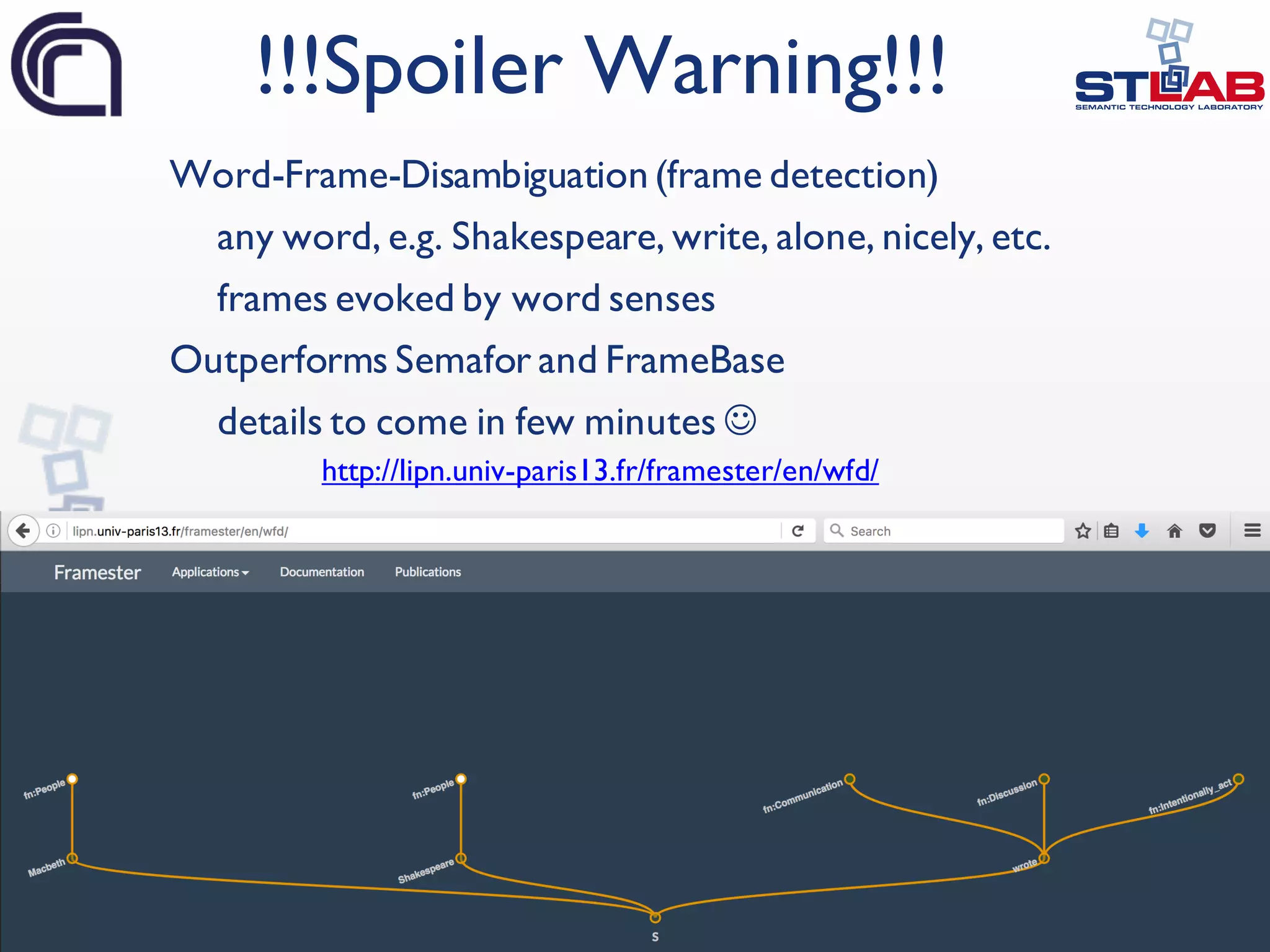
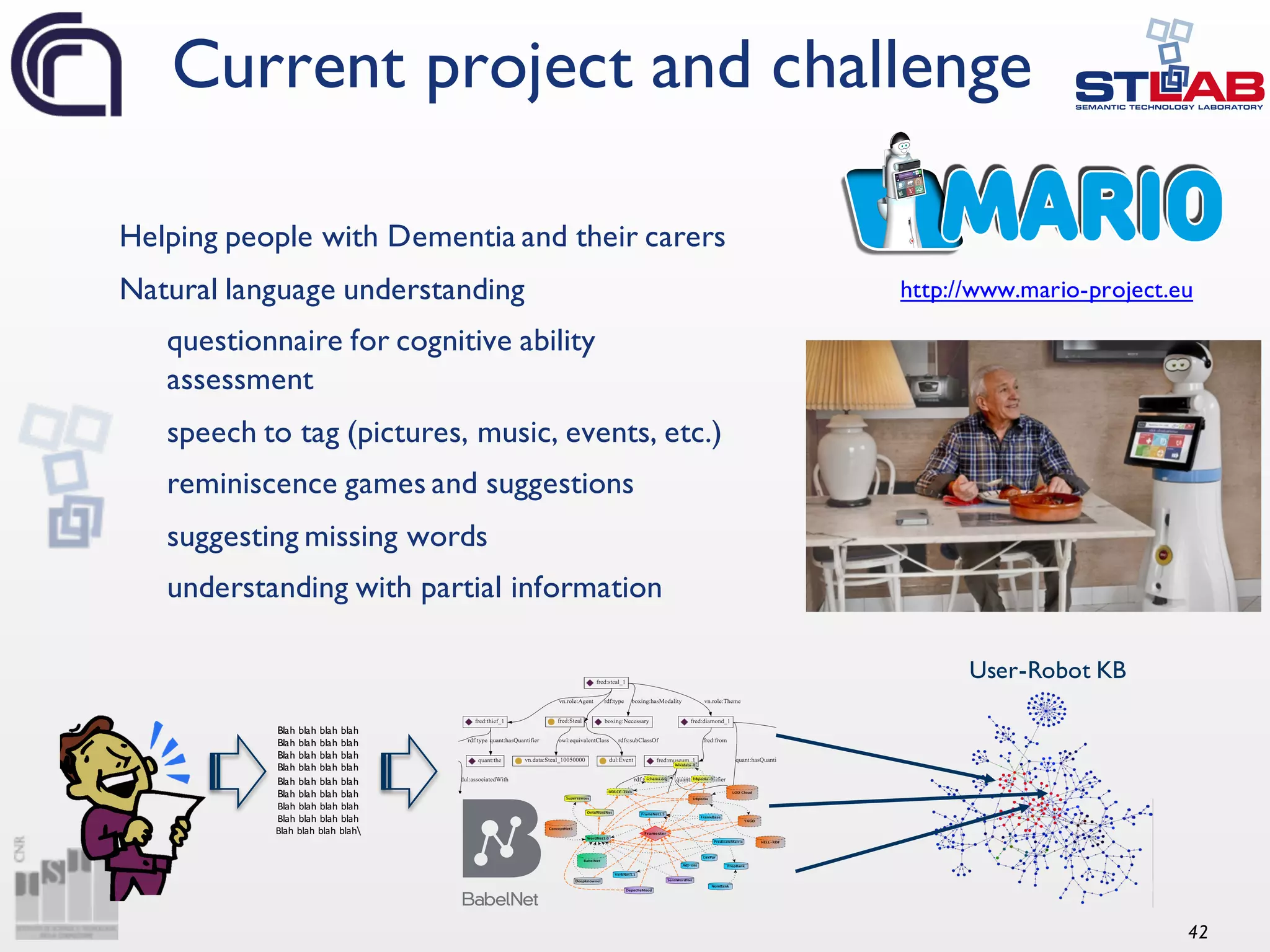

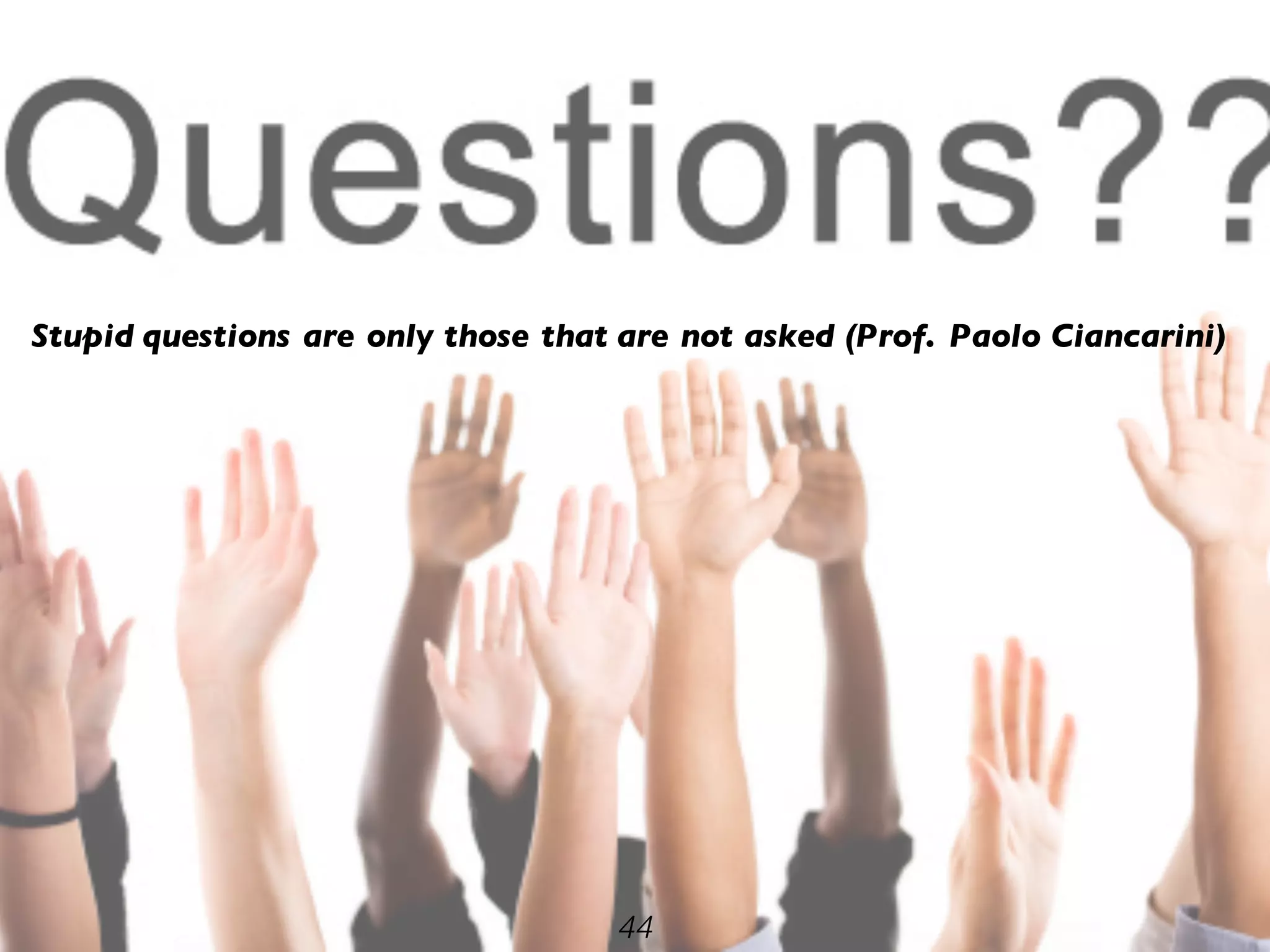
![45 References [1] Marvin Minsky: A Framework for Representing Knowledge. MIT-AI Laboratory Memo 306, June, 1974. [2] Charles J Fillmore. Frame Semantics and the Nature of Language. Annals of the New York Academy of Sciences, 280(1):20-32, 1976. [3] Aldo Gangemi, Valentina Presutti: Towards a pattern science for the Semantic Web. Semantic Web 1(1-2): 61-68 (2010) [4] Frank van Harmelen: The Web of Data: do we understand what we build? https://sssw.org/2016/?page_id=386 [5] Aldo Gangemi, Valentina Presutti, Diego Reforgiato Recupero, Andrea Giovanni Nuzzolese, Francesco Draicchio, Misael Mongiovì: Semantic Web Machine Reading with FRED. Semantic Web (To appear) [6] Valentina Presutti, Andrea Giovanni Nuzzolese, Sergio Consoli, Aldo Gangemi, Diego Regorgiato Recupero: From hyperlinks to Semantic Web properties using Open Knowledge Extraction pp. 351-378, Semantic Web, Volume 7, Number 4 / 2016.](https://image.slidesharecdn.com/ld4ieiswc2016-161018000125/75/Knowledge-Extraction-and-Linked-Data-Playing-with-Frames-45-2048.jpg)
![46 [7] Aldo Gangemi: A Comparison of Knowledge Extraction Tools for the Semantic Web. ESWC 2013: 351-366 [8] Aldo Gangemi, Valentina Presutti, Diego Reforgiato Recupero: Frame-Based Detection of Opinion Holders and Topics: A Model and a Tool. IEEE Comp. Int. Mag. 9(1): 20-30 (2014) [9] Diego Reforgiato Recupero, Valentina Presutti, Sergio Consoli, Aldo Gangemi, Andrea Giovanni Nuzzolese: Sentilo: Frame-Based Sentiment Analysis. Cognitive Computation 7(2): 211-225 (2015) [10] Jacobo Rouces, Gerard de Melo, and Katja Hose. Framebase: Representing n-ary relations using semantic frames. ESWC 2015: 505-521 [11] Aldo Gangemi, Mehwish Alam, Valentina Presutti, Luigi Asprino and Diego Reforgiato Recupero: Framester: A Wide Coverage Linguistic Linked Data Hub. In Proceedings of EKAW 2016 [12] Aldo Gangemi, Mehwish Alam, Valentina Presutti: Word Frame Disambiguation: Evaluating Linguistic Linked Data on Frame Detection. LD4IE@ISWC 2016: 23-31 References cont.](https://image.slidesharecdn.com/ld4ieiswc2016-161018000125/75/Knowledge-Extraction-and-Linked-Data-Playing-with-Frames-46-2048.jpg)